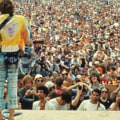Popular culture is also informed by the media. Popular culture is the set of practices, beliefs and objects that embody the most widely shared meanings of a social system. It includes multimedia objects, entertainment and leisure, fashion and trends, and language conventions, among other things. Popular culture is generally associated with mass culture or popular culture, and differs from high culture and various institutional cultures (political culture, educational culture, legal culture, etc.).
The association of popular culture with mass culture leads to a focus on the position of popular culture within a capitalist mode of economic production. From this economic point of view, popular culture is seen as a set of products produced through capitalist processes driven by a desire for profit and sold to consumers. On the contrary, the association of popular culture with popular culture leads to a focus on subcultures such as youth cultures or ethnic cultures. From this subcultural perspective, popular culture is seen as a set of practices by artists or other types of cultural creators that result in performances and objects that are received and interpreted by the public, both within and outside the subcultural group.
Holistic approaches examine the ways in which popular culture begins as the collective creation of a subculture and is then appropriated by the market system. The key issues of the sociological analysis of popular culture include the representation of specific groups and themes in the content of cultural objects or practices, the role of cultural production as a form of social reproduction, and the extent to which audiences exert their influence to determine the meanings of the culture they consume. Pop culture finds its expression in the mass circulation of items from areas such as fashion, music, sports and cinema. The world of pop culture had a particular influence on art since the early 1960s, through pop art.
Folklore provides a very different second source of popular culture. In pre-industrial times, mass culture matched popular culture. This former layer of culture still persists today, sometimes in the form of jokes or jargon, which are spread among the population by word of mouth and through the Internet. By providing a new transmission channel, cyberspace has renewed the strength of this element of popular culture.
Dictionary of Sociology of Open Education (Noun) Widely accessible and commonly shared aspects of culture (p. e.g. ASA — American Sociological Association (5th edition) APA — American Psychological Association (6th edition) MLA — Modern Language Association (7th edition) The Sociology Dictionary of Open Education (OESD) is a free online dictionary for students, teachers and %26 people curious to find meanings, examples, pronouncements, word origins, %26 quotes. Classical sociologists spoke in general about the concept of culture and the role of culture in shaping human social life, but without distinguishing the specific form of popular culture.
In the conditions of modernity, all industries that make a profit by inventing and promoting cultural material have become a principal source. Storey's texts on popular culture have helped bring the study of popular culture to the classrooms of schools and universities. It is the result of daily interactions, needs and desires and of the cultural “moments” that make up everyday mainstream life. This book applies a series of social and literary theories to the analysis of objects of popular culture as texts.
Gaines presents a unique autobiography on how to become a sociologist, study subculture and participate in the rock culture of the 1980s in New York. Gamson unravels the concept of celebrity in American popular culture using historical and sociological lenses. Cultural items that require extensive experience, education, training, taste, insight or reflection for their full appreciation rarely become elements of popular culture. Some say that popular culture tends to support a limited understanding and experience of life through common and unsophisticated feelings and attitudes and its emphasis on the banal, the superficial, the whimsical and the disposable.
It focuses on how comics went from the fringes of nerd culture to the center of American popular culture. Both academic facts and news are modified through popular broadcasting, often to the point of becoming blatant falsehoods. The meaning of popular culture then began to merge with that of mass culture, consumer culture, image culture, media culture and culture created by manufacturers for mass consumption. Critics can also affirm that popular culture comes more from sensationalism and narcissistic fantasies of wish fulfillment than from a considered sober reality and from mature personal and spiritual development.
. .


